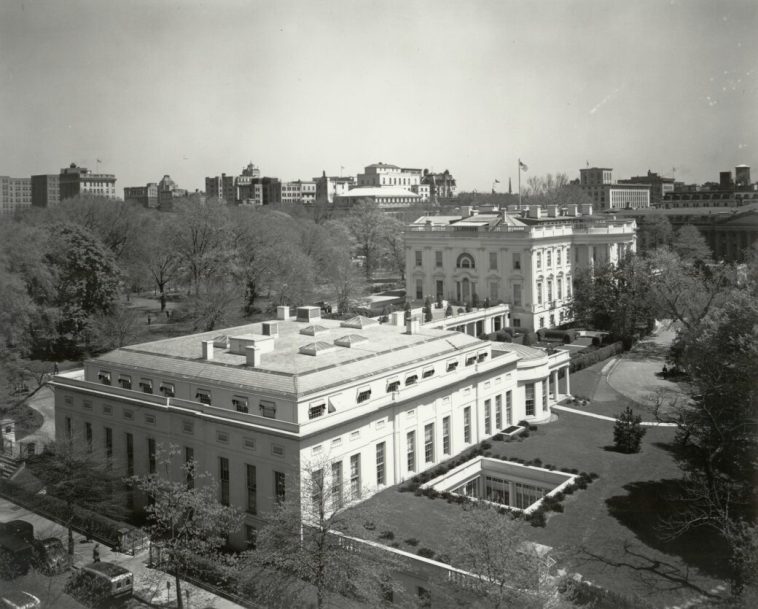In the realm of technology magnates, Elon Musk further tightened his sphere of influence last week. It’s been reported that Musk persistently persuaded the then President Donald Trump to secure an office space in the West Wing, a request which seems to be on the verge of being granted. Concurrently, Musk became the single authority handling the federal project aimed at reducing governmental overhead – dubbed the Department of Government Efficiency (DOGE) – after Vivek Ramaswamy, the previous co-chair, stepped aside.
Ramaswamy’s decision to relinquish his role was officialized by his intent to campaign for the governorship in Ohio. However, speculative reports suggest that Musk may not be completely uninvolved in his decision to step down. Certain key players within Trump’s inner circle apparently developed a distaste for Ramaswamy following his posting of a diatribe arguing that American culture’s inability to foster competitive tech professionals and its ‘celebration of mediocrity.’ It was thereafter that Musk voiced his preference for Ramaswamy to resign from the DOGE.
Intriguingly though, Ohio’s gubernatorial elections will only occur in November of the upcoming year – several months after the initial end date for Ramaswamy’s mandate with the DOGE. Musk has also been vocal about his aspirations for a more prestigious workspace from which he can manage his DOGE-related undertakings, a location not just within the expansive White House complex as had initially been scheduled, but within the White House itself.
Musk already possesses a governmental email address and credentials for the complex but has continued discussions with administration officials regarding his ‘access’ and physical ‘vicinity’ to Trump. The degree of Musk’s accessibility to the then president seems guaranteed, irrespective of his workspace’s location. On top of that, Trump has recently signed an executive policy that further legitimizes Musk’s activities by effectively reallocating the U.S. Digital Service’s staff to the DOGE project and urging governmental units to form ‘DOGE teams’ to assist in executing the administration’s cost-reduction efforts.
Yet, the precise contour and reach of these cuts still linger in uncertainty. Musk initially forecasted an astounding $2 trillion cutback, but he has since been tempering that prediction, framing it as an aspirational target and a ‘favorable scenario.’ His team, many of whom are volunteers drawn from Silicon Valley’s tech community, have filled recent weeks with examining previous audits of federal agencies.
Despite their efforts, the new task force was not spared from hurdles on its initial day – progressive entities lodged three legal challenges against the DOGE mere moments after Trump assumed office. The task of minimizing government spending is both intricate and fraught with opposition. Yet, with Musk’s influence and futuristic thinking, the DOGE project seeks transformation, while navigating the complexities of legalese and politics stuck in traditional modes of operation.
Whether Musk’s stratagems will bring about the landmark change he envisions remains a question yet to be answered. As the single authority of this intricate, federal cost-cutting endeavor, he shoulders great responsibility. His interactions with the administration, his desired proximity to the corridors of power, and his emphatic significance within Trump’s circle attest to the faith entrusted in him.
His ambitions to occupy an office within the White House interior – the iconic nerve center of American governance – indicate the weight he wishes to bear. Musk wishes to orchestrate this vast, administrative symphony from the very heart of the supervisory complex, placing him at the very crux of decision-making. It’s a remarkable testament to Musk’s authority and influence.
One of the more contentious points surrounding Musk’s ascendancy within this role has been the controversial departure of the previous incumbent, Vivek Ramaswamy. Many have looked upon this transition critically, citing Musk’s expressed preference for Ramaswamy’s resignation as potential meddling. It seems that Ramaswamy’s commentary about the inability of American culture to develop competitive tech professionals struck a nerve, and may have factored into his decision to relocate to Ohio’s political landscape.
Amidst all this, the very fact that Ohio’s governorship elections are still months away from Ramaswamy’s scheduled departure from the DOGE adds an intriguingly complicated layer to the narrative. His abrupt withdrawal and subsequent gubernatorial aspirations in Ohio present an elaborate situation uncovering a dramatic shift in the political and technological landscapes.
Following the onboarding of Musk, the DOGE faced an immediate challenge, rapidly encountering opposition from progressive groups. The legal battles hurled at DOGE crisp on the heels of Trump’s inauguration underscore the complex nature of this transition. The direction in which Musk guides the DOGE will not only define the legacy of Trump’s administration but will also determine how government efficiency is perceived and pursued in the future.
As mass attention focuses upon the coming changes to federal overheads, Musk has carefully recalibrated his earlier $2 trillion target. Describing it as an ‘optimistic outcome,’ Musk appears to be fine-tuning his approach in the face of escalating scrutiny and anticipation.
The fact that his team consists largely of Silicon Valley volunteers sheds light on the concerted nature of the effort to overhaul federal spending. What had been a side project for many techies has now been catapulted into the nation’s spotlight under the direction of one of the industry’s most influential figures. How this synergy will shape the government’s financial future is closely watched by observers both within and outside of Washington.
For those tracking the path of the DOGE project, the narrative yet remains incomplete. The stakes are undeniably high, and the ushering of Musk into a pivotal role in this journey situates him at an intriguing crossroads of technology and governance.
How this tale will unravel is a subject of fascination for the observers. What is sure, though, is that with Musk’s name now synonymous with the DOGE project, the future of federal cost-cutting is expected to undergo significant alteration. This unanticipated mashup of tech efficiency and governmental austerity may just revolutionize the way we perceive cost-efficiency within the echelons of power. It’s an unfolding narrative, but certainly one worth watching.


